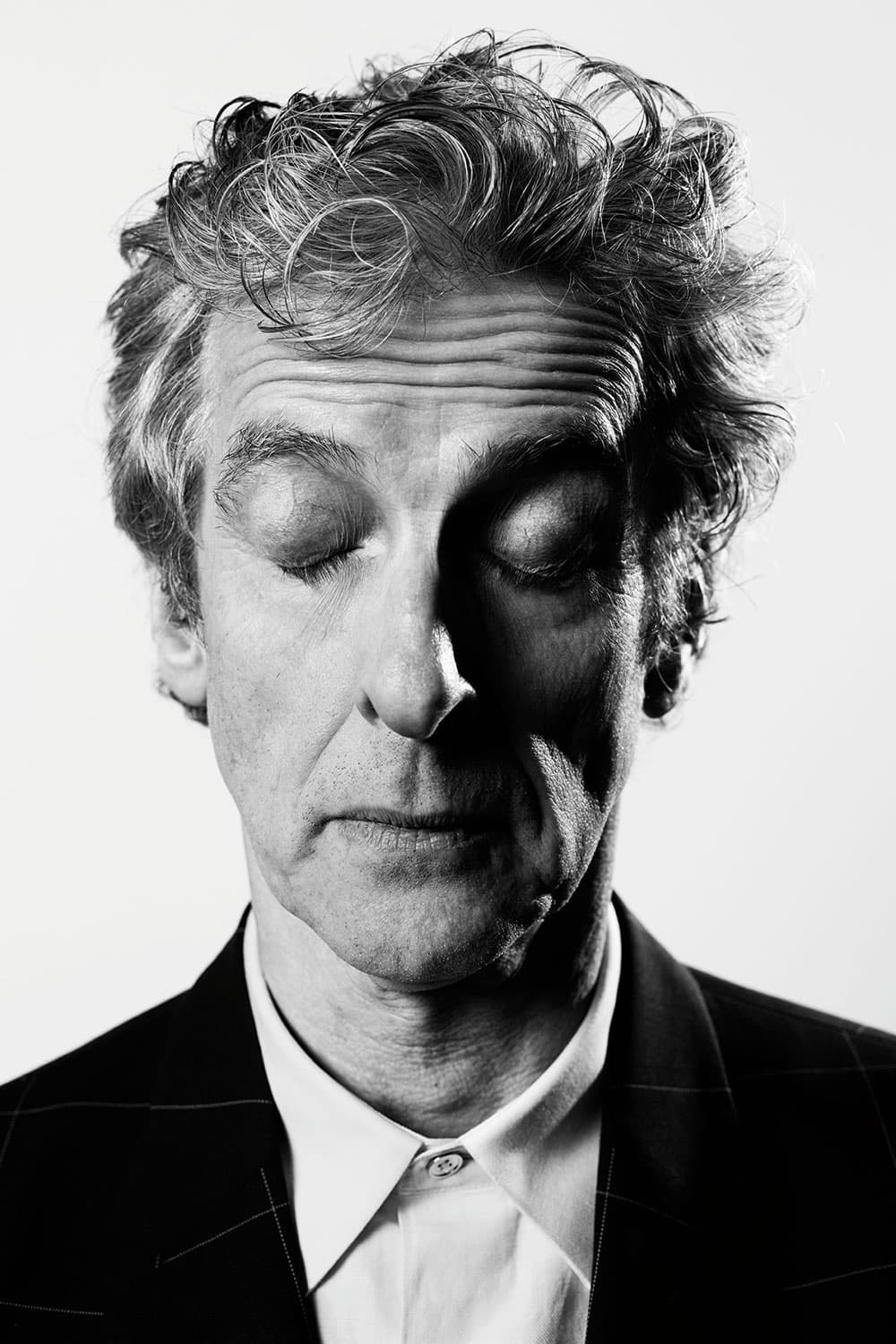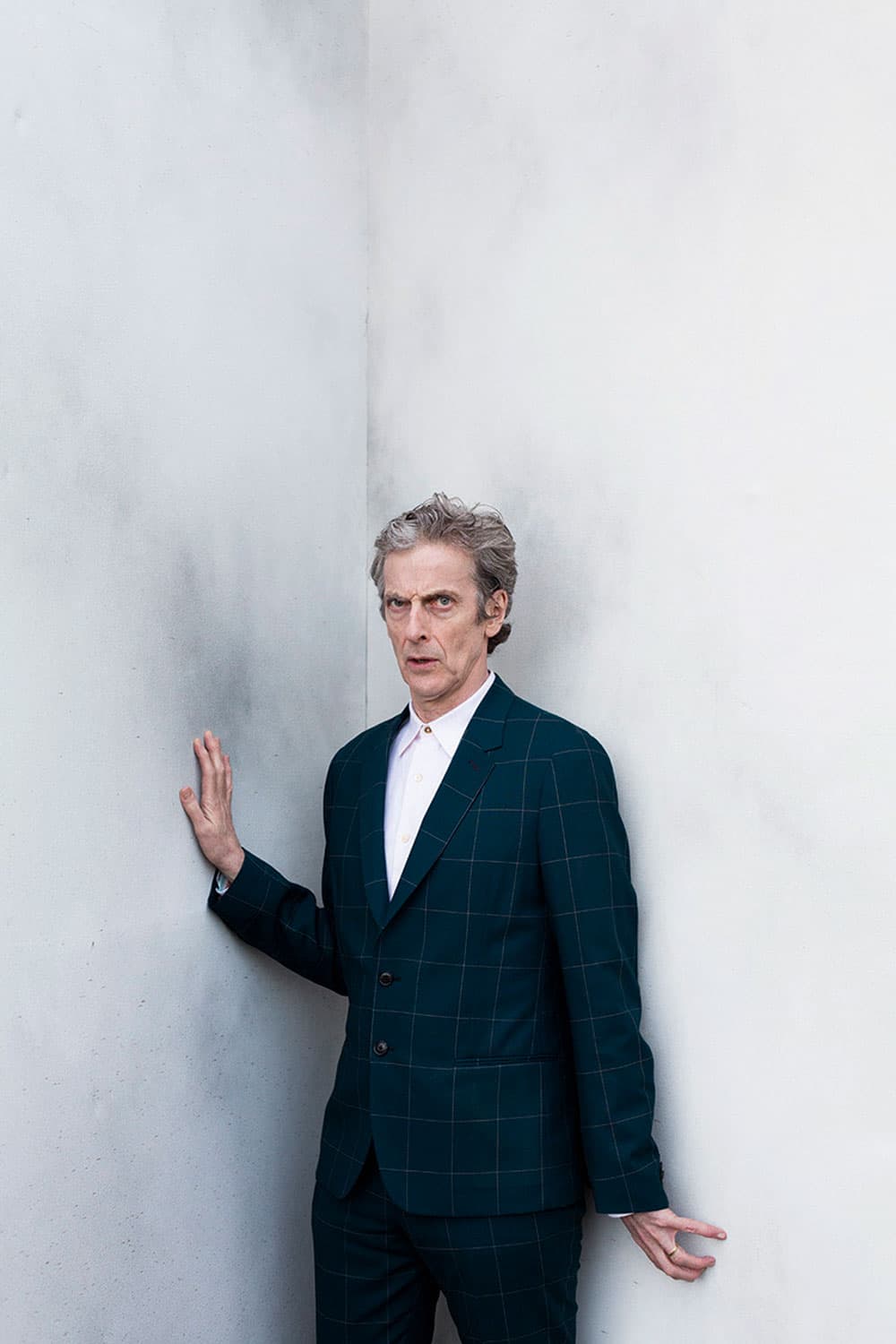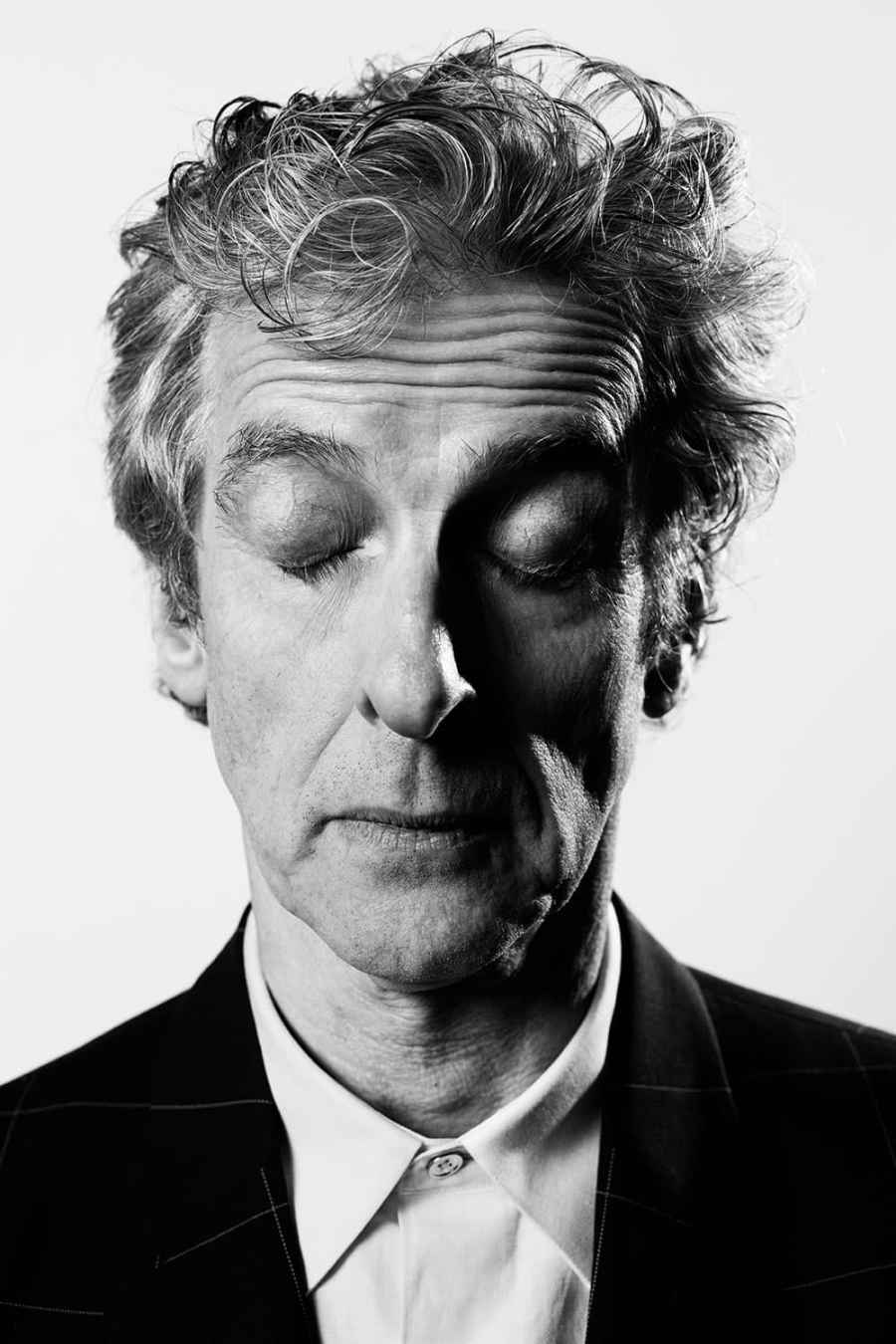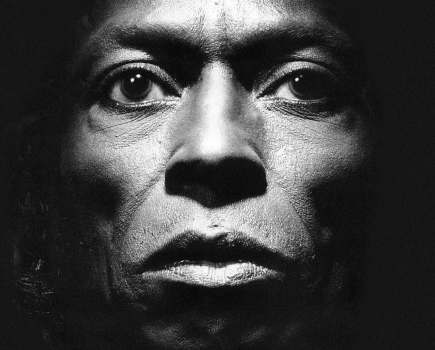
This image of Capaldi with his eyes shut was used for a full page in the Sunday Times Magazine. Canon EOS 5D Mark III, EF50mm f/1.4 USM , 1/125sec at f/6.3, ISO 200
When I’m commissioned, to shoot a portrait, I’m usually given a free hand to photograph the subject in the way I choose. Editors know the kind of images I’m going to produce, so I simply shoot as wide a range of portraits as I can in the time available. However, sometimes I’m given a more detailed brief and have to work within certain constraints. When I was asked to photograph the actor Peter Capaldi for the Sunday Times Magazine, I was specifically asked for an upright portrait, quite simple and stark, against a white background. The editor also wanted images that referenced Irving Penn’s famous ‘Corner Portraits’, made in the late 1940s. In this series of images, Penn photographed major figures of the day in a narrow, claustrophobic corner space.
It’s always tricky when magazines have an image in mind that the photographer has to somehow emulate, especially when that image is an all-time classic set-up. Penn’s pictures were probably taken in a studio lit by beautiful north light and his set would have been a well-crafted permanent fixture. However, when photographing Capaldi, I had to recreate Penn’s style in a couple of hours on a Doctor Who film set in Cardiff Bay, where the least important thing going on was my photo shoot.
As is often the case, the shoot was very stressful. Everyone tried to be accommodating, but it was a film set operating to a strict schedule and the people working there were busy. I asked if a set could be built for the pictures and they got two pieces of 8ft tall MDF, fixed them together and sprayed them white. They did their best, but I wanted to use natural daylight, which was already fading on a late afternoon in March. I knew if I had to light these plain, smooth boards with flash it would look terrible, so they weren’t suitable at all.
Instead, I looked around and found two canvases on the set. They had a texture to them, so were much better. The Doctor Who art director helped me bolt them together and I put them in a sheltered outdoor area where they were lit by daylight. But Capaldi was delayed and it was getting darker by the minute.

With the daylight fading fast, Harry was able to capture this Irving-Penn-style ‘corner portrait’ of Peter Capaldi. Canon EOS 5D Mark III, EF50mm f/1.4 USM, 1/60sec at f/4.5, ISO 400
He eventually arrived with an entourage, which included a stylist and a groomer. He had been given a suit to wear and looked very well turned-out. He was also very accommodating and nice to deal with, the complete opposite of the Malcolm Tucker character he played in the BBC series The Thick of It.
However, he looked very tired. While we were talking, he pointed to a hotel across the bay and said that during the week he was on the film set all day, then at night went back to the hotel to learn his lines for the next day. He was only able to go home and see his family at the weekend. This relentless schedule went on for months. I felt quite sorry for him. The financial rewards, and being part of the massive Doctor Who legacy, were counterbalanced by the never-ending grind of producing hours of content.
I explained that usually the portraits I shoot are a record of the relationship I have with the subject, but on this occasion I was in a rush and had to get some pictures before it got dark. He was fine with that. We went to the set I’d made outside and I photographed him with my Canon EOS 5D Mark III. Even pushing the ISO to 400, the shutter speed was 1/60sec – slower than I’d have liked.
After shooting the scenario that relied on natural light, I could relax a bit and brought him inside for a different set-up. I shot him against a piece of distressed plywood I found in the studio, then finished off with some close-in shots against a white backdrop, as the Sunday Times Magazine had requested. For those images, I lit him with one softbox from the side and a raw flash head flagged off, so the light just hit the side of his face.
For one of these images, I asked him to close his eyes and raise his eyebrows. I’ve taken several of these ‘eyes wide shut’ portraits of my subjects and I find it a very effective and poignant way of shooting people. It opens the face out and gives them a relaxed appearance. In Capaldi’s case, it makes him look very different as his big, intense eyes are such a feature of his appearance.
Peter Capaldi was very generous with his time and gave us just over an hour for the shoot. The picture with his eyes shut was converted to black & white and used over a whole page in the Sunday Times Magazine. Although he was absolutely beat at the time, it doesn’t diminish the power of the shot, and in a way it adds to his craggy, lived-in look.
Harry Borden
Harry Borden is one of the UK’s finest portrait photographers. He has won prizes at the World Press Photo awards and in 2014 he was awarded an Honorary Fellowship by the Royal Photographic Society. The National Portrait Gallery holds more than 100 of his images. His new book, Survivor: A Portrait of the Survivors of the Holocaust, is available now.







